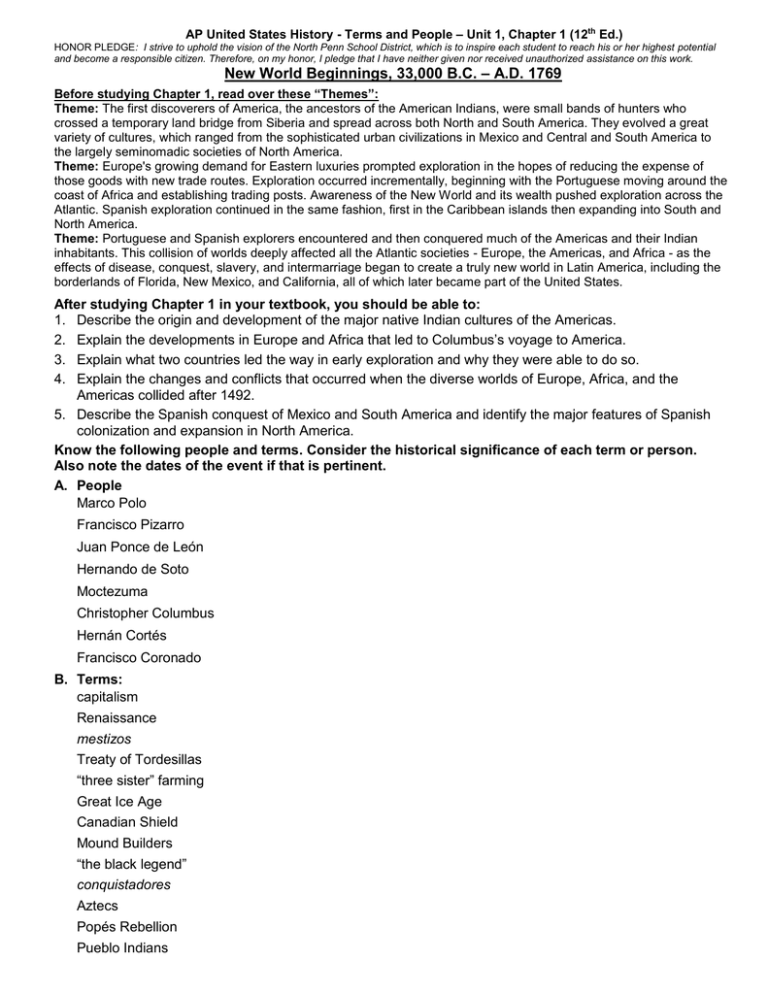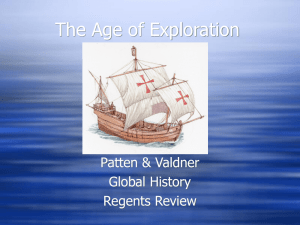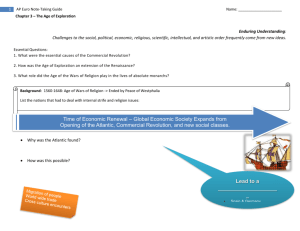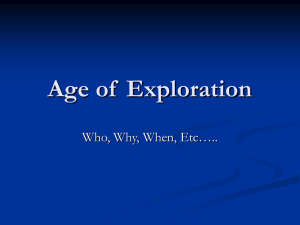– Unit 1, Chapter 1 (12 Ed.)
advertisement

AP United States History - Terms and People – Unit 1, Chapter 1 (12th Ed.) HONOR PLEDGE: I strive to uphold the vision of the North Penn School District, which is to inspire each student to reach his or her highest potential and become a responsible citizen. Therefore, on my honor, I pledge that I have neither given nor received unauthorized assistance on this work. New World Beginnings, 33,000 B.C. – A.D. 1769 Before studying Chapter 1, read over these “Themes”: Theme: The first discoverers of America, the ancestors of the American Indians, were small bands of hunters who crossed a temporary land bridge from Siberia and spread across both North and South America. They evolved a great variety of cultures, which ranged from the sophisticated urban civilizations in Mexico and Central and South America to the largely seminomadic societies of North America. Theme: Europe's growing demand for Eastern luxuries prompted exploration in the hopes of reducing the expense of those goods with new trade routes. Exploration occurred incrementally, beginning with the Portuguese moving around the coast of Africa and establishing trading posts. Awareness of the New World and its wealth pushed exploration across the Atlantic. Spanish exploration continued in the same fashion, first in the Caribbean islands then expanding into South and North America. Theme: Portuguese and Spanish explorers encountered and then conquered much of the Americas and their Indian inhabitants. This collision of worlds deeply affected all the Atlantic societies - Europe, the Americas, and Africa - as the effects of disease, conquest, slavery, and intermarriage began to create a truly new world in Latin America, including the borderlands of Florida, New Mexico, and California, all of which later became part of the United States. After studying Chapter 1 in your textbook, you should be able to: 1. Describe the origin and development of the major native Indian cultures of the Americas. 2. Explain the developments in Europe and Africa that led to Columbus’s voyage to America. 3. Explain what two countries led the way in early exploration and why they were able to do so. 4. Explain the changes and conflicts that occurred when the diverse worlds of Europe, Africa, and the Americas collided after 1492. 5. Describe the Spanish conquest of Mexico and South America and identify the major features of Spanish colonization and expansion in North America. Know the following people and terms. Consider the historical significance of each term or person. Also note the dates of the event if that is pertinent. A. People Marco Polo Francisco Pizarro Juan Ponce de León Hernando de Soto Moctezuma Christopher Columbus Hernán Cortés Francisco Coronado B. Terms: capitalism Renaissance mestizos Treaty of Tordesillas “three sister” farming Great Ice Age Canadian Shield Mound Builders “the black legend” conquistadores Aztecs Popés Rebellion Pueblo Indians AP United States History - Terms and People – Unit 1, Chapter 1 (12th Ed.) HONOR PLEDGE: I strive to uphold the vision of the North Penn School District, which is to inspire each student to reach his or her highest potential and become a responsible citizen. Therefore, on my honor, I pledge that I have neither given nor received unauthorized assistance on this work. C. Sample Essay: Using what you have previously learned and what you learned by reading Chapter 1, you should be able to answer an essay such as this one: 1. What fundamental factors drew the Europeans to the exploration and settlement of the New World? 2. Is it correct to say that the Europeans “discovered” the New World? Explain. D. Map Work: Using the numbers and letters on the map, identify the places listed below: B A A C 1. _____________________________ 2. _____________________________ 3. _____________________________ 4. _____________________________ 5. _____________________________ 6. _____________________________ 7. _____________________________ 8. _____________________________ 9. _____________________________ 10._____________________________ 11._____________________________ 12._____________________________ A. _____________________________ B. _____________________________ C. _____________________________ Is this map an accurate representation of the world? Why or why not?



